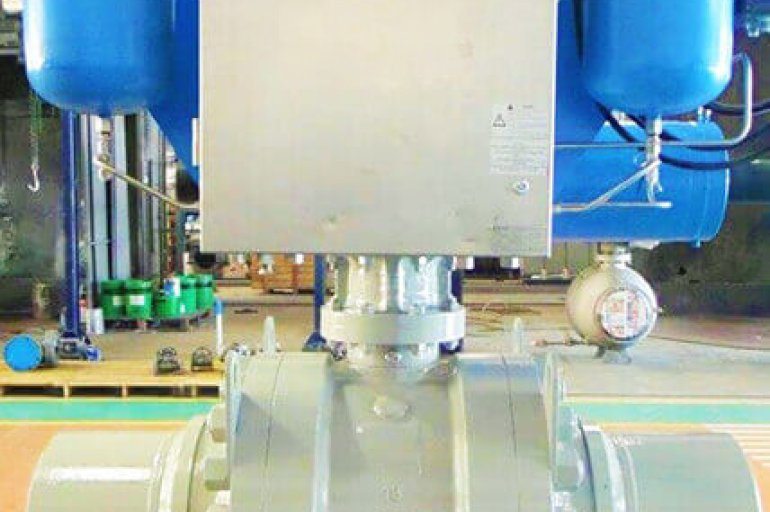Importance of Trunnion Ball Valves in Water Treatment

Introduction
The intricate processes of water and wastewater treatment require elements
of efficiency, dependability, and accuracy. Trunnion-mounted ball valves
have emerged as indispensable components, playing a pivotal role in managing
the fluid control systems within these vital operations. This article
explores the essential role of trunnion-mounted ball valves in water and
wastewater treatment, elucidating their advantages, applications, and
contributions to the seamless functioning of these crucial facilities.
Understanding Trunnion Mounted Ball Valves
Trunnion-mounted ball valves, categorized as quarter-turn valves, have found
widespread usage across diverse industries, including water and wastewater
treatment. Unlike their floating ball counterparts, trunnion-mounted ball
valves incorporate an additional point of stabilization, known as the
trunnion, which secures the ball at both its upper and lower ends. This
innovative design enhances durability and augments sealing performance,
rendering them exceptionally suitable for handling the demanding fluids
encountered in water treatment processes.
Key Benefits in Water and Wastewater Treatment
1. Reliability and Leak Mitigation: In water and wastewater treatment
contexts, the prevention of leaks and the minimization of operational
downtime are paramount. Trunnion-mounted ball valves offer robust sealing
mechanisms, substantially reducing the risk of leakage. The incorporation of
the trunnion design equips these valves to endure higher pressures and flow
rates, ensuring steadfast operation even under challenging conditions.
2. Negligible Pressure Drop: A distinct advantage of trunnion-mounted ball
valves lies in their low torque requirement for operation. This
characteristic allows the valves to maintain a secure seal while
necessitating minimal force for control. As a result, pressure drops across
the valve are minimal, fostering efficient flow control within water and
wastewater treatment processes.
3. Precision Flow Management: The precision management of fluid flow holds
the utmost importance in achieving optimal treatment outcomes.
Trunnion-mounted ball valves facilitate precise regulation of flow rates,
rendering them indispensable for applications necessitating controlled
administration of chemicals, additives, or other treatment agents.
4. Resilience in Hostile Environments: Water and wastewater treatment
facilities subject valves to corrosive chemicals, abrasive particles, and
drastic temperature fluctuations. Trunnion-mounted ball valves are
purpose-built to withstand such demanding environments, courtesy of their
sturdy materials and construction. This inherent durability translates to
extended service life and diminished maintenance requisites.
Applications in Water and Wastewater Treatment
1. Sludge Handling: Trunnion-mounted ball valves find utility in processes
related to sludge handling and dewatering. These valves effectively regulate
the flow of slurry and sludge, contributing to the efficient separation of
solid waste from water.
2. Chemical Injection: Precise dosing of chemicals constitutes a critical
aspect of water treatment procedures. Trunnion-mounted ball valves exercise
precise control over the flow of chemicals, encompassing coagulants,
disinfectants, and pH adjusters, thereby ensuring accurate treatment while
minimizing wastage.
3. Distribution Systems: The role of trunnion-mounted ball valves extends to
governing the distribution of treated water within the facility and to
external pipelines. Their capacity to manage high-pressure scenarios renders
them well-suited for upholding consistent flow rates in distribution
networks.
4. Effluent Discharge: The proper management of wastewater discharge assumes
paramount importance in averting environmental contamination.
Trunnion-mounted ball valves facilitate the regulation of treated wastewater
flow during the discharge process, thereby ensuring regulatory compliance
and safeguarding the ecosystem.
Conclusion
Within the domain of water and wastewater treatment, trunnion-mounted ball
valves emerge as essential components that facilitate the seamless operation
of pivotal processes. Their dependability, precise flow control, and
inherent resilience render them indispensable for handling a diverse range
of fluids, chemicals, and sludges. Whether the task involves regulating
chemical flow, managing sludge, or controlling distribution systems, these
valves play a decisive role in bolstering the efficiency and efficacy of
water and wastewater treatment facilities.
As the global demand for potable water continues to escalate and
environmental regulations grow more stringent, the significance of
trunnion-mounted ball valves in water and wastewater treatment becomes
increasingly pronounced. Their contributions to leak prevention, reduction
of pressure drop, and meticulous flow control underscore their pivotal role
in safeguarding the integrity of water treatment systems. With ongoing
technological advancements, it is foreseeable that these valves will
continue to evolve, adapting and innovating to further heighten their
efficiency and sustainability within the critical realm of water and
wastewater management.
One notable player in this field is Oswal Industries Limited, a leading
manufacturer and supplier of industrial valves. Their expertise in crafting
trunnion-mounted ball valves tailored for water and wastewater treatment
applications exemplifies the commitment to innovation and reliability that
defines the industry. With ongoing technological advancements, it is
foreseeable that these valves will continue to evolve, adapting and
innovating to further heighten their efficiency and sustainability within
the critical realm of water and wastewater management.
In conclusion, trunnion-mounted ball valves stand as a testament to
engineering excellence, addressing the intricate demands of water and
wastewater treatment with precision and resilience. Their role in enhancing
fluid control, promoting efficiency, and contributing to environmental
sustainability remains irreplaceable, making them an indispensable asset in
the pursuit of clean and safe water resources for our world.
